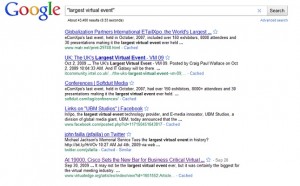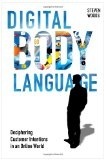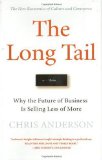Does Size Matter with Virtual Events?
 Many virtual events vendors and companies have touted that they have held the “largest” virtual event. Cisco GSX in 2009 with 19,000 attendees and AMD with 672,000 attendees in 2006 (Forrester Report, Market Overview: Virtual Event Platforms for B2B Marketers) are just a couple of examples. A quick search on the term “largest virtual event” yields over 40,000 results on Google – some referring to vendors with others referencing events.
Many virtual events vendors and companies have touted that they have held the “largest” virtual event. Cisco GSX in 2009 with 19,000 attendees and AMD with 672,000 attendees in 2006 (Forrester Report, Market Overview: Virtual Event Platforms for B2B Marketers) are just a couple of examples. A quick search on the term “largest virtual event” yields over 40,000 results on Google – some referring to vendors with others referencing events.
But does size really matter?
While an important indicator of a platform’s scalability, I think the focus on size overlooks other key factors when determing the value of virtual for your marketing and communications campaigns.
Metrics
The largest event may not necessarily yield the right results for your company. Many of the platform providers have detailed metrics regarding the number of attendees, length of stay, number of downloads and more. The challenge is how developed is their analytics engine to provide a layer of intelligence to interpret that data.
Questions to consider: What type of metrics are provided? What format are these metrics provided to me – excel data sheets or graphs? Are there lead scoring capabilities to identify A, B and C leads? If so, how does it work? Does the vendor help me to calculate ROI? A discussion on Focus, a resource for business professionals, provides more discussion about the ROI of virtual events.
User Engagement
Developing an experience that is unique to your company, ties back to your brand, and is engaging requires thoughtful planning. With hundreds and thousands of potential attendees, how do you structure the environment to intuitively create a flow within your virtual event. A critical element is mapping out how you want people to engage with one another, exhibitors and speakers within the event.
Questions to consider: Can I use a cookie cutter template or do I need something more custom? Will the vendor work with me or do I have to provide this? Do I have to use an agency in addition to the platform provider? How much time do I need to accomplish the desired experience? How do I create the right attendee flow within my virtual event?
Learning
The main component of any event is the content. Driving people to the virtual event is one aspect, while delivering content in a way that imparts learning is another element.
Questions to consider: Beyond how long somebody attends my event, what ways are there to measure short-term and long-term retention? Can you test or quiz the audience before, during and after an event? Will this cost more? What delivery method works best (video, audio, text, combo) and why?
Conclusion
While you host or build the largest event, a truly successful virtual event goes beyond size. It provides the right metrics with an engaging experience that delivers real learning to you audience.
What other factors are there to consider?
WITI Summit: Summary of Social Media, Cloud, and Mobility Sessions
 I attended the WITI Summit earlier this week, recapping the keynotes on the first day. On the second day, I attended three panel sessions on the Applied Cloud, New Opportunities in the Mobile Market, and Social Media Business Solutions. Below is my summary of these sessions:
I attended the WITI Summit earlier this week, recapping the keynotes on the first day. On the second day, I attended three panel sessions on the Applied Cloud, New Opportunities in the Mobile Market, and Social Media Business Solutions. Below is my summary of these sessions:
Applied Cloud Panel Discussion
The panel discussion highlighted the benefits of cloud applications in terms of cost efficiencies, speed to implementation, scalability, and flexibility. Vanessa Alvarez, analyst with Frost & Sullivan, indicated that a hybrid approach (on-premise and cloud) may emerge which may ease issues with integration across multiple vendors and data.
While the benefits of cloud applications was discussed, the issue of data integration was present. According to R. Ray Wong, analyst with the Altimeter Group: ” Integration is very hard. Going backwards to best of breed … People are going out to procure apps themselves. Integration has to come back to have same reports. Everything is coming back as have to have a good data architecture and how the business processes get tied back for reporting. Then can talk about data integration.”
In the end, the possibility of SaaS suites will emerge.
Mobile Marketing
Mobile is becoming an integral part of our lives. The panel clarified that there are six types of mobile applications: 1. Communications, 2. Games, 3. Multimedia, 4. Productivity (email, calendaring, etc.), 5. Travel, and 6. Utilities (address book, task manager, etc.).
Considering that the US has double the number of smartphones than China, which is second worldwide, there is ample opportunity for marketers to leverage mobile. The key takeaway was to provide your audience with useful applications that address their needs. For example, applications for new mothers would be an interesting opportunity for Johnson & Johnson or other company targeting new moms.
Social Media Business Solutions
The panel consisted of representatives from Meebo, Paypal, and IBM. For me, I found how Paypal and IBM leveraged social business very interesting:
Paypal Leverages Social for Community Forum and Customer Service
Paypal is leveraging social media as part of the service’s web self-service. The goal is to provide a long-term community to better understand the needs of their audience. For Paypal, the value is understanding the cost of product development and launch. With web analytics, they are also able to track customers and determine the path for communications help.
IBM Connects with Partners with Virtual Event
For IBM, they built a robust virtual event to learn from partners and provide them the information they need from IBM. 5,000 partners attended the virtual event live with 2,500 accessing the archive. IBM’s goal was not to replace its physical event with virtual. Rather, they can be selective with face-to-face events, using virtual to supplement the face-to-face.
In terms of value, they reviewed the analytics to measure against their objectives, such as engagement, did the conversations continue beyond the event, or was the conversation at a deeper level.
WITI Summit – Summary of Keynotes
 The WITI Summit was held this past week in San Jose. Founded to help women advance in technology, the first day of the summit had some powerful keynotes. I was able to catch presentations by Sally Jenkins, Vice President, Worldwide Marketing, Symantec; Sandy Carter, VP, Software Business Software, IBM; and (my favorite!), Dr. Ruth Westheimer.
The WITI Summit was held this past week in San Jose. Founded to help women advance in technology, the first day of the summit had some powerful keynotes. I was able to catch presentations by Sally Jenkins, Vice President, Worldwide Marketing, Symantec; Sandy Carter, VP, Software Business Software, IBM; and (my favorite!), Dr. Ruth Westheimer.
 I have summarized the presentations by Sally and Sandy below. And while I would like to summarize Dr. Ruth’s presentation, much of her content was very specific and not appropriate for the blog, if you know what I mean =) It was a great honor to hear her speak, as well as to meet her personally. I will post summaries of some key sessions tomorrow.
I have summarized the presentations by Sally and Sandy below. And while I would like to summarize Dr. Ruth’s presentation, much of her content was very specific and not appropriate for the blog, if you know what I mean =) It was a great honor to hear her speak, as well as to meet her personally. I will post summaries of some key sessions tomorrow.
Brand Transformation – Sally Jenkins
Sally described the process that Symantec have been undergoing over the past 3 years to rebrand and reposition Norton. She highlighted key questions to consider:
1. What does the data say?
2. What is the buzz in the market about your brand and competitors?
3. Are you listening to your customers?
4. Can you wait any longer to change?
5. Are you listening to your gut?
For Norton, they looked at what story they had to tell to create buzz within the category. They decided to have a purpose which highlighted what they stood for and would lend itself to a dialogue. The story was about fighting cybercrime. The methodology included:
– research
– edutainment for engagement and to communicate the stats
– the media strategy was focused online
– and developed a physical exhibit that discussed the “black market” of identify theft to educate the masses
They implemented this through their channels and with one voice internationally. Internally, they wanted their employees to live and breathe the brand of fighting cybercrime:
– held seminars
– created brand story book for every employee
– gave employees new mission – fight cybercrime, not sell software.
– rethink role for each job- main competitor is cybercriminal
The results?
– Customers now stay with Norton for an average of 4 yrs
– 47 percent share of voice
– Winning on all channels
– Turned Norton haters into advocates
– Multiple product awards
Social Media Ecosystem – Sandy Carter
Sandy discussed how the ecosystem around your company is very powerful. Previously, it was about one-way marketing and now it’s more open. In fact, she quoted one study which stated that 80 percent of CEOs will go outside of the company for recommendations about services and the brand.
With this in mind, Sandy highlighted the ANGELS framework:
– Analyze
– Nail the story and strategy
– Go to market
– Energize communications
– Leads and revenue
– Scream – breakthrough the noise
For example, IBM leveraged a game to energize partners and students before placing it online. This online game is now the number 1 lead generation tactic, moving the game from edutainment to lead generation.
Using Social Media to Drive Virtual Tradeshow Leads

I authored a guest post on “Using Social Media to Drive Virtual Tradeshow Leads” for It’s All Virtual, an influential blog exploring virtual events and environments. In my post, I highlight key strategies on how you can leverage social media:
1. Identify influencers
2. Engage in conversations
3. Advertise Socially
4. Share Freely
5. Measurement and Tracking
I conclude my post by stating:
One word of warning is to first research and evaluate before plunging in with a social media marketing program, especially when contacting individuals and bloggers or participating in online discussions. While social media marketing takes time and effort, when done well, the results can be spectacular!
What has worked for you?
Crisis Communication – San Bruno Fire

via flickr by achesonblog
At approximately 6:15 pm, we now know a huge gas explosion occured in San Bruno. First, please take a moment to send positive thoughts to the residents and families of the homeowners. If you live in the Bay Area and can give blood, they are requesting O-negative (assuming any and all blood types will be welcomed) and can find locations via the Blood Centers of the Pacific website.
Like the BP oil spill, the confusion around such an explosion is understandable. What perplexed me was an on-air phone interview with a PG&E spokesperson. When the reporter inquired if the gas line was PG&E’s, the spokesperson purposely didn’t answer the question.
Since crisis communications on this level isn’t my core expertise, I’m interested in hearing your thoughts on how one would handle a situation like this. Here are my initial thoughts:
1. Express Sympathy: The spokesperson did communicate that the company’s thoughts were with the families of this tragedy. This was a good sign, demonstrating the company’s empathy with the victims.
2. Answer the Questions: I recognize that PG&E may face legal action once everything is sorted out over the next few days. But by not answering a direct question regarding “was this a PG&E gas line?”, PG&E seemed to be more concerned about evading responsibility. Maybe a better response would have been “At this time, our concern is with the families and we are working with the authorities to ensure that the immediate danger has passed.”
Update (9/9/10, 10:19 pm): Per an email sent to news outlet (source: CBS 5 News), PG&E acknowledges that the gas pipeline was the company’s and plans to take full responsibility if it’s found to be the company’s fault. Nothing on PG&E’s website at this time.
3. Provide Valuable Information: In a 24/7 news cycle, news outlets are seeking to get information out as quickly as possible and companies are seeking to minimize potential risk. With that said, the interview seemed to be premature. The spokesperson didn’t seem well-prepared and didn’t provide tangible information. Rather, there was (still is) an opportunity for PG&E to discuss the steps they are taking to bring power back to the area.
4. Give Back to the Community: There is a great need for the families displaced by this crisis. While there needs to be a balance, PG&E can demonstrate its corporate care by donating to shelters, relief organizations, and supporting a blood drive amongst employees.
Again, thoughts are with the families and victims.
Update (9/10/10): Last night, the President of PG&E did a press conference around 11:30 pm at night. Unlike the spokesperson earlier, the president was prepped and repeated three messages: 1) ongoing investigation so cannot speculate, 2) working to make the area safe and 3) thoughts are with the families and if this is PG&E’s responsibility, they will “make it right”. While short on detail, these statements addressed my points above.
Recent Twitter Update and Implications for Marketing
 September 1, 2010, Twitter sent an email to users regarding two new updates to its service. I found the update about moving to t.co URL wrapping intriguing, especially this sentence:
September 1, 2010, Twitter sent an email to users regarding two new updates to its service. I found the update about moving to t.co URL wrapping intriguing, especially this sentence:
When you click on these links from Twitter.com or a Twitter application, Twitter will log that click. We hope to use this data to provide better and more relevant content to you over time.
This signals more than providing protection against malicious content (which is important) and to provide better content for users. Rather, by “logging the click,” I see this as part of Twitter’s continued efforts to provide value-added services and data tracking for corporations:
1. Measurement and Analytics: The click-through rate will help with Twitter’s “Resonance” rating. While the resonance rating is part of Twitter’s Promoted Tweets campaign, there is value to provide companies – small, medium and large – access to this data, similar to a Google Analytics dashboard. Maybe Twitter can provide an entry-level offering with minimal information and then charge for for more analytics and optimization options.
2. Content Creation: One type of intelligence is understanding how your audience consumes and distributes the content. By analyzing these patterns, you can gain insight into the types of content that your audience is seeking. You can then develop a content strategy to reach and connect with your tareted audience segments.
3. Influencer Relations: By combining Twitter’s retweet information with the t.co click-through data, you can better identify influencers within your social graph. These would be individuals whose followers not only retweet content but also takes action via click-through information.
Conclusions
I’m curious to see what future developments will be introduced (or maybe acquired) by Twitter to enable individual and corporate brands to optimize their presence on Twitter. And whether or not these services are complimentary or competitive to companies like Radian6. What do you think? Anything I’m missing?
Meet Up at Upcoming Conferences
 I always look forward to meeting people at conferences. I plan to be attending these two upcoming conferences. Drop me an email if you’re interested in connecting.
I always look forward to meeting people at conferences. I plan to be attending these two upcoming conferences. Drop me an email if you’re interested in connecting.
WITI’s Women and Technology Summit, September 12-14, 2010 – San jose Doubletree Hotel – I will be attending on the 13th and 14th. The conference brings together top technology leaders to discuss strategy and growth.
SocialTech 2010, October 26, 2010, San Jose Doubletree Hotel – This conference looks like it will be a powerhouse of speakers discussing how to leverage social media for B2B.
Look forward to seeing you in San Jose.
About
Favorite Service
Recent Comments
- on Going Virtual Isn’t Necessarily the Answer to Replacing Your Physical Events
- on Going Virtual Isn’t Necessarily the Answer to Replacing Your Physical Events
- on Going Virtual Isn’t Necessarily the Answer to Replacing Your Physical Events
- on Going Virtual Isn’t Necessarily the Answer to Replacing Your Physical Events
- on Going Virtual Isn’t Necessarily the Answer to Replacing Your Physical Events
Ads by Google
Favorite Books
Marketing Blogs
PR Blogs
- KD Paine's Measurement Blog
- Micro Persuasion
Virtual Events & Meetings Blogs
- Cisco Virtual Environments
- It's All Virtual
- The Webinar Blog
- Virtual Edge Institute

 Follow
Follow Cece Salomon-Lee is director of product marketing for Lanyon Solutions, Inc. and author of PR Meets Marketing, which explores the intersection of public relations, marketing, and social media.
Cece Salomon-Lee is director of product marketing for Lanyon Solutions, Inc. and author of PR Meets Marketing, which explores the intersection of public relations, marketing, and social media. 


